Triathletes often have a real appetite for data to help drive structured training and race execution. Heart rate based training zones rely on accurate information on your exertion level with instant feedback on the numbers. To help you navigate through the sea of options I have pulled together our list of the 7 Best Triathlon Heart Rate Monitors 2024. Using our panel of triathletes I have been able to get real world user views on what works and what doesn’t. Providing our answer to what is the best heart rate monitor for triathletes?
Use the Triathlon Heart Rate Monitors Buyers Guide to help you compare models and decide what fits your needs best. The post has been update for the latest models available in 2024.
7 Best Triathlon Heart Rate Monitors 2024
- Garmin Forerunner 965
- Garmin HRM- Pro Plus
- Garmin HRM-Dual
- Garmin HRM-Swim
- Polar H10 N Heart Rate Monitor
- Wahoo TICKR X
- Whoop 4.0
Best Heart Rate Monitor for Triathlon
1. Garmin Forerunner 965
Trivelo Rating – 5/5
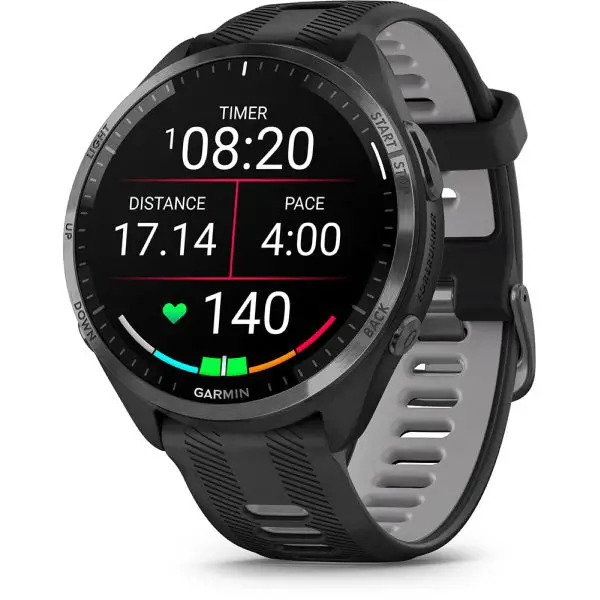
If you don’t fancy using a heart rate strap for capturing your heart rate information then a watch with wrist monitoring could be the answer. The Garmin Forerunner 965 is our favourite triathlon watch and comes fully featured with optical heart rate monitoring. The Garmin Forerunner 965 is the best triathlon watch for monitoring heart rate.
The Garmin Forerunner 965 uses green low-intensity light that is shone through the skin to determine heart rate. This works by measuring the light refractored by the blood flowing through your veins. It is subject to variance based on the bone and soft tissue around your wrist.
All the other triathlon heart rate monitors in our round-up use chest straps that measure the small electrical impulses given off by your heart as the muscle contracts. It means as you get warmer and begin to sweat the accuracy of a chest strap heart rate monitor improves. This can be in contrast to a wrist based optical light sensor that can be impacted by changes in sweat and water.
Garmin Forerunner 965 Specifications
| Battery type | Rechargeable |
|---|---|
| Battery life | 23 days (in smartwatch mode only) |
| Water resistance | Depth of 50 metres |
| Weight | 52g |
| Connectivity | 2.4Ghz Ant+, Bluetooth, Wi-Fi |
Best Price for the Garmin Forerunner 965 Watch
Is the Garmin Forerunner 965 good for triathlon?
Yes. The Garmin Forerunner 965 is able to provide heart rate information using green low-intensity light for wrist based monitoring. The Garmin Forerunner 965 is suitable for swimming with a 5ATM rating but the heart rate monitoring is not accurate in water. You will be able to get accurate heart rate information for all other disciplines in triathlon training and racing.
If you are considering using the Garmin Forerunner 965 for an Ironman triathlon check our guide on how to set up your watch to make sure it lasts to the finish line. A 12hour+ Ironman can be too much for the Garmin 965 unless you follow these steps.
If you are wondering about an upgrade to the Garmin Forerunner 965 watch read our comparison of the Garmin 965 v 955 v 945.
2. Garmin HRM-Pro Plus Heart Rate Monitor
Trivelo Rating – 4/5
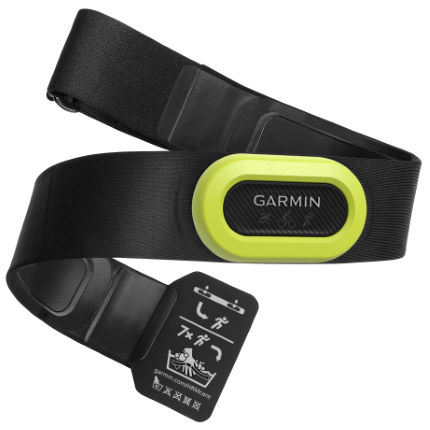
Garmin no surprises feature in our list of the best triathlon heart rate monitors. They have been refining their monitors for over a decade and still firm advocates of the quality of data from chest strap monitors. The Garmin HRM-Pro Plus heart rate monitor with chest strap promises more accuracy than ever before. This triathlon orientated strap can work through all disciplines with full water proofing to capture metrics through the swim.
The strap needs to be paired with a suitable Garmin device such as the Garmin Forerunner 965 Watch. The HRM-Pro Plus has a combination of ANT+ and Bluetooth connectivity for pairing meaning you are not limited to multi-sport watch connectivity. The heart rate monitor strap will also function perfectly well for all those using it on a Turbo Trainer for Zwift or equivalent indoor cycling.
The Garmin HRM-Pro Plus Heart Rate Monitor captures your heart rate in near real time. In addition it is able to calculate steps and intensity using algorithms inside the monitor itself so it is not a purely passive capture device. The device is able to capture and store the information in local storage for up to 18 hours use allowing you to finish a swim and then connect to upload the results. Or complete a full Ironman if you wished! All that water can make connectivity for devices a problem which many of you will know from inconsistent results on various historic monitors.
The Garmin HRM-Pro Plus Heart Rate Monitor is designed with open water in mind as opposed to the challenging environment that is a swimming pool. The harsh chemicals tend to not only be bad for us but also technology. The HRM-Pro Plus will cope with occassional use in the pool but if this is your bread and butter routine use the HRM-Swim. More tech to buy!
The HRM-Pro Plus is powered using standard CR2032 cell batteries rather than being rechargeable. Garmin have not yet nailed the connections for waterproof straps retaining a permanent battery it would seem. That said with low costs on the CR2032 batteries it is a perfectly adequate solution. In addition with a forecast 12 month battery life you won’t need to worry about this very often.
Garmin HRM-Pro Plus Specifications
| Battery type | User-replaceable CR2032, 3 V |
|---|---|
| Battery life | 12 months |
| Water resistance | Depth of 10 metres NOTE: This product does not transmit heart rate data while swimming. |
| Weight | 59g |
| Connectivity | 2.4Ghz Ant+, Bluetooth |
Best Price for the Garmin HRM-Pro Plus
3. Garmin HRM-Dual Heart Rate Monitor
Trivelo Rating – 3/5
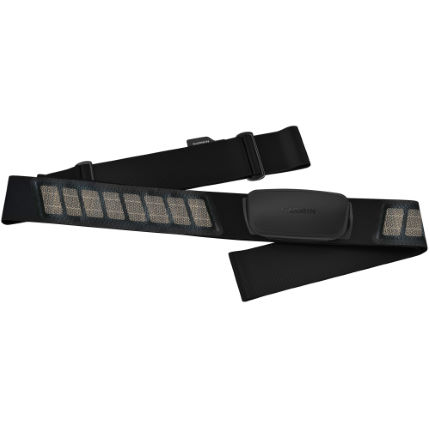
Second offering from the gurus at Garmin in our list of the 6 best triathlon heart rate monitors comes the Garmin HRM-Dual Heart Rate Monitor. This is my personal favourite and go to chest strap based HRM for triathlon and training . The strap and monitor are the lightest and most comfortable from my own use. I wouldn’t go as far as to say you will forget you are wearing it but pretty close.
The functionality is much simpler than the Garmin HRM-Pro Plus. The HRM-Dual has no local storage to allow the capture of information without connectivity issues. The Garmin HRM-Dual relies on real time transmission of data. It is designed to connect to a suitable device such as Garmin watch through ANT+ and bluetooth technology.
The HRM-Dual shares the battery technology with the HRM-Pro Plus using CR2023 cell batteries. The quoted average life of these from Garmin is up to 3.5 years. Much longer than the HRM-Pro Plus as it is not using any energy for locally storing data to transmit. These figures will be dictated by your level of use. If you’re out there doing 10 hours of training a week the numbers are likely to be less.
The Garmin HRM-Dual is not suitable for swimming metrics as it will not capture data while swimming. If you are looking for a triathlon multi-discipline device you will need to go for the HRM Pro Plus. For most athletes though monitoring heart rate in the water is less relevant so it can give you useful insight for the bike and run.
If you train listening to music running or cycling you face the constant worry about staying aware of your surroundings. We have reviewed the Oladance open ear headphones that don’t block out all the surrounding noise. Find out if Nick thought this was worthwhile as a runner and cyclist who never used headphones before for this reason.
Garmin HRM-Dual Specifications
| Battery type | User-replaceable CR2032, 3 V |
|---|---|
| Battery life | 3.5 years |
| Water resistance | Depth of 5 metres NOTE: This product does not transmit heart rate data while swimming. |
| Weight | 54.4g |
| Connectivity | 2.4Ghz Ant+, Bluetooth |
Best Price for the Garmin HRM-Dual
Stay calm in transition with the perfect triathlon bag. Pick the perfect bag for you with our list of 9 of the Best Triathlon Bags 2024 Buyers Guide.
Garmin HRM-Pro Plus HRM vs Garmin HRM-Dual
There are a number of differences between the GarminHRM-Pro and the HRM Dual.
- Firstly is the battery life with the Pro Plus having 12 months and the Dual having 3.5 years. This is down to the Dual being simpler relying on real time transmission.
- The second difference is the storage. The HRM-Pro Plus HRM has local storage so it can cache data on heart rate to transmit in bulk. This means it can record swimming data and then transmit it as connectivity for real time heart rate monitoring in water is not reliable.
- The third difference is the HRM Pro Plus includes accelerometer technology so can do more than just measure heart rate. It can support better merics for running with running power, vertical oscillation, ground contact time and ground contact balance.
If you are looking for a new triathlon swimming wetsuit this year we have a huge round up to help. Read our 15 Best Triathlon Wetsuits 2024 Ultimate Buyers Guide. This includes direct comparisons on the best triathlon wetsuits in the market with latest best prices.
4. Garmin HRM-Swim Heart Rate Monitor
Trivelo Rating – 3/5
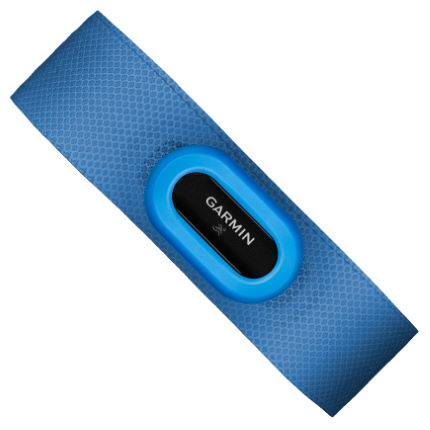
Garmin appearing for the 4th time in our line up of the best triathlon HRMs. The Garmin HRM-Swim is class leading for swimming but can be used throughout triathlon training and racing. The Garmin HRM-Swim has a waterproof classification of 5ATM that means it can withstand water pressure up to 50 metres in depth. Reality is the device is only rated for time under water of 1 hour although I know plenty who use it for longer periods than this.
The Garmin HRM-Swim relies on CR2032 cell batteries with a forecast of 8 months. The Garmin HRM-Swim vs Garmin HRM-Tri vs Garmin HRM-Pro sees battery life reduce through each version. The HRM-Swim recording the shortage battery life at 8 hours compared to 10 for the HRM-Tri and 12 for the HRM-Pro. As stated already the battery life estimates are based on usage that varies depending on your training regime. The Garmin quoted battery life for the HRM-Swim is 8 months based on an average of 3 hours swimming a week.
The Garmin HRM-Swim heart rate monitor relies purely upon ANT+ for connectivity so unable to connect to bluetooth devices. This in practice means you are reliant on a Garmin watch such as the Forerunner 945, 955 or 965. Not really a big problem for most who are likely using this for SWOLF metrics alongside heart rate information.
Very much the other Garmin Heart rate monitors the HRM-Swim has local storage for up to 20 hours of information to be captured. This compares directly with the HRM-Tri likely sharing the same storage for this.
| Battery type | User-replaceable CR2032, 3 V |
|---|---|
| Battery life | 8 months |
| Water resistance | Depth of 50 metres |
| Weight | 72g |
| Connectivity | 2.4Ghz Ant+ |
Best Price for the Garmin HRM-Swim
Are Garmin heart rate monitors accurate?
Wrist heart rate monitors such as the low intensity green light sensors on the Garmin Forerunner 965 have limitations. They can be impacted by the fit of the watch and positioning of the watch on the wrist. They can also be affected by water or sweat in extreme circumstances. Additionally if you don’t keep the optical sensor clean they can degrade over time. Generally though they are within 1% of the accuracy of a medical electrocardiagram accuracy.
A chest strap heart rate monitor such as the Garmin Pro Plus provide a greater degree of accuracy. With closer proximity to your heart and direct skin contact they are very accurate. Provided you keep the electrodes clean the measurements are accurate and the only real way to track heart rate while swimming.
5. Polar H10 N Heart Rate Monitor
Trivelo Rating – 3.5/5
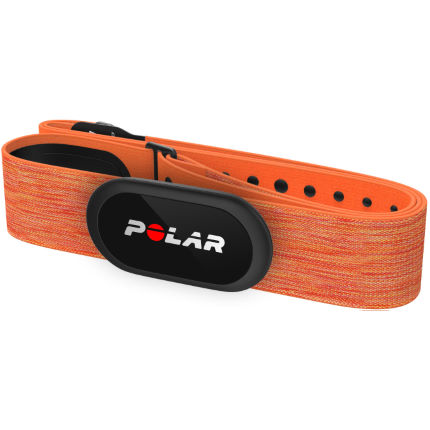
Number 5 in our list of the Best Triathlon Heart Rate Monitors comes from another mainstream player – Polar. Like the 3 earlier Garmin chest strap HRMs the Polar is designed to capture heart rate information through swim, cycle and run. Designed following a common approach with a chest strap Polar promise first rate accuracy from the Polar H10 N Heart Rate Monitor.
The Polar H10 N HRM uses ECG sensors following the Garmin which uses the most advanced electrodes to guarantee accuracy. Polar claims on the quality metrics achieved. The sensors are fully water proof and capable of storing heart rate information for a single exercise thanks to local storage. Allowing for the information to be uploaded following exercise.
The Polar H10 HRM comes with both bluetooth and ANT+ connectivity so you do not need to pair this with a Polar watch. Bluetooth connectivity allows direct connection to a mobile phone or suitable fitness equipment. This makes the Polar H10 N HRM a direct competitor for the similar specced Garmin HRM-Pro Plus Heart Rate Monitor.
Battery life is impressive with over 400 hours operation on a single battery that should mean battery replacement at a class leading level.
Polar H10 N Heart rate monitor specifications
| Battery type | User-replaceable CR2025, 3 V |
|---|---|
| Battery life | 400 hours usage |
| Water resistance | Depth of 50 metres |
| Weight | 60g |
| Connectivity | 2.4Ghz Ant+, bluetooth |
Best Price for the Polar H10 Heart Rate Monitor
Can you pair Polar H10 N HRM to Garmin?
Yes. You can pair the Polar H10 N heart rate monitor to a Garmin Watch using the Ant+ connectivity. You don’t need to have a Polar watch to connect to in order to access the heart rate data. You can use any heart rate monitor that features Ant+ technology to connect.
6. Wahoo TICKR X Heart Rate Monitor
Trivelo Rating – 3.5/5
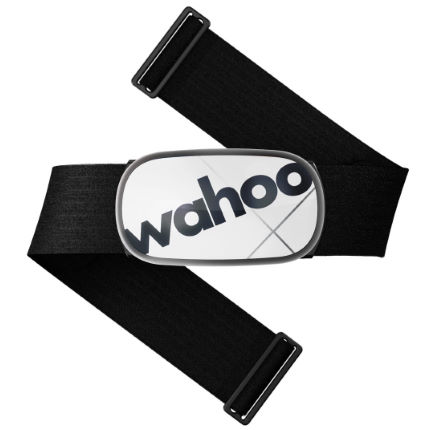
Wahoo have transformed the turbo trainer market with various products so no surprises they have extended this to peripherals such as heart rate monitors. Maintaining their innovative approach they pushed for full connectivity to allow bluetooth pairing with the bike and other kit. Meaning their triathlon heart rate monitors are compatible with a wide range of kit as well as crucially being waterproof. The waterproof casing is IPX7 rated so good for 30 mins and up to 1 metre only. Potentially a limiting factor for anyone considering using in longer swimming events.
They have recently updated their heart rate monitor with the Wahoo TICKR X focused more on comfort and design. The monitor has bluetooth as mentioned but is capable of handling 3 bluetooth connections. This means you can integrate across multiple products such as the app on a phone, watch and the bike unit itself. If you want to purely use the Wahoo TICKR X it can sync to the proprietary Wahoo mobile app on iOS and Android.
Like the two Garmin triathlon heart rate monitors the Wahoo TICKR X heart rate monitor has local storage. This memory has increased on the latest version. It now can handle up to 50 hours of memory. This is class leading against both the Garmin HRM and Polar.
The Wahoo TICKR X Heart Rate Monitor is not limited to cycling sensors. Wahoo HRM will track running metrics as well as heart rate. The Wahoo HRM will track cadence, vertical oscillation and running smoothness through internal algorithms.
The battery life of the Wahoo TICKR X has reduced in comparison to the predecessor that could achieve up to 500 hours. The TICKR X only managing 200 hours with additional battery consumption from the accelerometer sensors for additional metrics.
Wahoo TICKR X HRM Specifications
| Battery type | User-replaceable CR2032, 3 V |
|---|---|
| Battery life | 200 hours usage |
| Water resistance | Depth of 1 metre only |
| Weight | 48g |
| Connectivity | 2.4Ghz Ant+, bluetooth |
Best Price for the Wahoo TICKR X HRM
Can you pair the Wahoo TICKR X HRM to Garmin?
Yes. You can pair the Wahoo TICKR X HRM to a Garmin Watch using the Ant+ connectivity. You don’t need to have a Wahoo product such as the Elemnt Rival watch to connect to in order to access the heart rate data. You can use any heart rate monitor that features Ant+ technology to connect.
7. Whoop 4.0
The 7th suggestion in our list of best triathlon HRMs is the Whoop 4.0. Not strictly speaking a pure heart rate monitor the Whoop is more of a whole life fitness product. But with the band providing continuous monitoring on your heart rate it is something many triathletes have been using. If none of the other HRMs fit the bill take a look at the Whoop 4.0.
Triathlon Heart Rate Monitors Buyers Guide
Why Should You Buy a Heart Rate Monitor?
Using a Heart Rate Monitor improves the effectiveness of training. This is because it can provide a scientific measure of how hard you are working. Rather than relying on your perception of effort you have a measure of how hard the heart is working. This can help you avoid lazy training sessions that don’t add real value but also help you increase effort as your fitness improves.
A HRM is also very useful for ensuring the training you are doing is safe and within your limits. As we age the safe limits of our maximum heart rate reduce and we should consider how we are training within this to stay safe while exercising.
Assuming you are planning to use your new heart rate monitor for triathlon training and not just once you can record any improvements. Regular training of a common type can be compared to determine how your heart and general fitness are improving.
Why is heart rate an important measure for triathlon training?
The amount of times the heart beats per minute (BPM) is called your heart rate. Through exercise your heart can become stronger. This allows the heart to pump more blood around the body for every beat. Oxygen is carried from lungs to muscles in the bloodstream. When you exercise muscles need to consume more oxygen that is supplied from the heart. This increase in oxygen demand requires the heart to beat faster and the BPM number to increase.
What does Resting Heart Rate mean?
Resting Heart Rate describes the number of beats per minute while not active. At rest. This can be measured simply by sitting in a relaxed state and measuring the BPM to determine your resting heart rate. This can be impacted if you are under tension or stress or if you have taken some form of stimulus such as coffee. It is best to record your resting heart rate over a number of days to get a true value from the average discounting any outliers. Generally the fitter you are the lower your resting heart rate is likely to be. As an example Mo Farah is reported to have a resting heart rate of 33BPM. For most adults a resting heart rate should be between 60BPM and 100BPM.
What does Maximum Heart Rate mean?
Maximum heart rate is a number that equates to the recommended peak of beats per minute you should push your heart to. It acts as a guide to determine how high you should push your heart through exercise while remaining safe. You can engage a specialist in sports science to calculate but it is widely accepted to use the calculation of 220 minus your age. Examples of maximum heart rate calculations:
- 220 – 20 = 200BPM (20 year old)
- 220 – 30 = 190BPM (30 year old)
- 220 – 40 = 180BPM (40 year old)
- 220 – 50 = 170BPM (50 year old)
- 220 – 60 = 160BPM (60 year old)
What are the types of Heart Rate Monitors?
There are two types of Heart Rate monitors for triathletes.
Chest Strap HRM
A chest strap HRM is worn across your chest under any clothing. The chest strap features a recording sensor that is worn centrally on your front close to your heart. The sensors detect the electrical signals that the heart generates as it beats.
Optical Sensor HRM
An optical sensor HRM uses green LED lights to shine through the skin and measure blood flow from the reflected light generally on the wrist. The sensors are generally fitted in a multi-sport watch such as the Garmin Forerunner 945 as listed in our best triathlon heart rate monitors.
How do triathlon heart rate monitors connect to watches?
A chest strap heart rate monitor connects with a triathlon watch using Ant+ or bluetooth. Ant+ connectivity uses the same frequencies as Wi-Fi and Bluetooth (2.4Ghz) but uses a lower transfer rate. This means it is designed to consume less power and have longer battery life. It has less range than Bluetooth limited to around 1.5meters which make it perfect for a heart rate monitor connecting to a watch on your wrist. Bluetooth can transfer data up to 16x faster than Ant+ but this speed of connectivity is not terribly relevant for heart rate monitor data capture.
What is the average heart rate for a triathlete?
Any athletes heart rate will vary depending on the level of effort they are put under. A triathlete heart rate will vary depending on a number of factors including level of effort, fitness, age, sex, tiredness, and countless others. The resting heart rate of a top end triathlete is generally low as they are in peak physical condition. Top end endurance athletes will have a resting heart rate of 40bpm or lower.
What is the best heart rate monitor for Ironman?
My choice would be a triathlon watch with an optical heart rate monitor for Ironman triathlon. Using a chest strap for an Ironman is one more thing that go wrong on a day with many moving parts. Keeping your day as simple as possible when it comes to kit gives maximum chance of success. The all new Garmin Forerunner 965 GPS watch is a perfect heart rate monitor for Ironman.
If you are looking to enter an Ironman check out our list of the biggest questions currently in our inbox on Ironman. All the facts behind Ironman you may have before entering your first one.
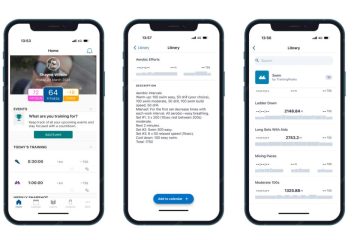
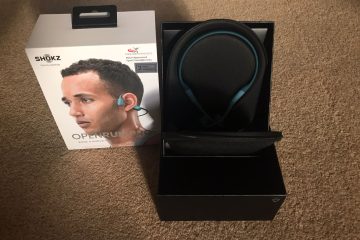
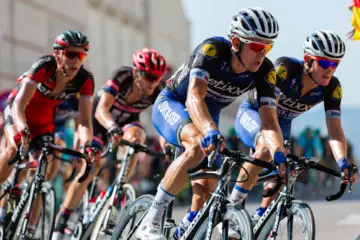
0 Comments